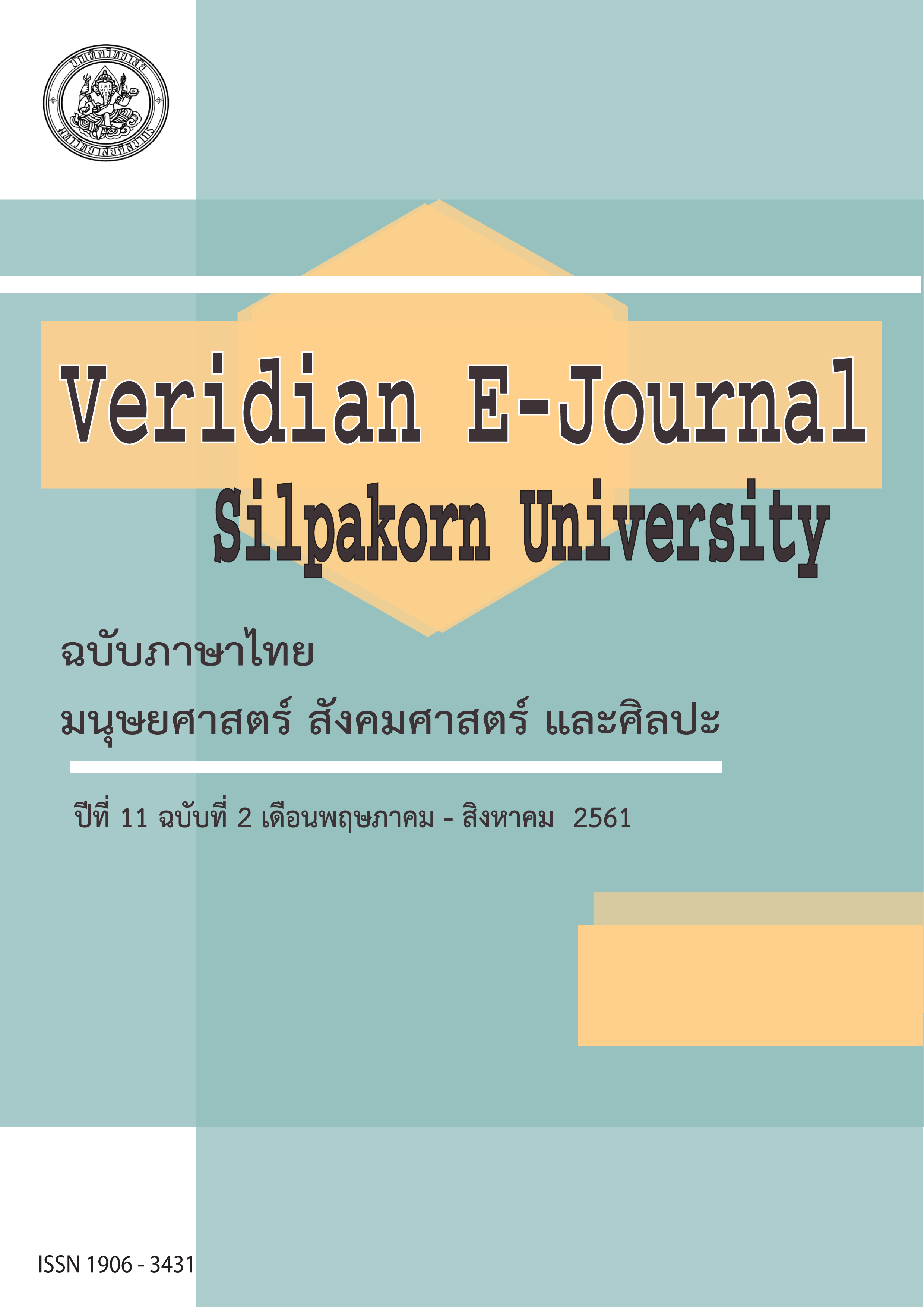หลักการใช้คำว่า “เป็น” และ “คือ” สำหรับนักศึกษาชาวจีน (Practical Thai Usage of /pen/ and /khɯ:/ for Chinese Student)
Main Article Content
Abstract
บทความนี้มีวัตถุประสงค์เพื่อหาหลักการใช้คำว่า “เป็น” และ “คือ” สำหรับนักศึกษาชาวจีน ข้อมูลที่ผู้เขียนนำมาวิเคราะห์ในงานนี้แบ่งเป็น 2 ส่วน ส่วนแรกคือข้อมูลที่ใช้ในการวิเคราะห์ข้อผิดพลาดในการใช้คำว่า “เป็น” และ “คือ” ผู้เขียนเก็บจากงานเขียนบันทึกประจำสัปดาห์ของนักศึกษาชาวจีนจำนวน 219 เรื่อง ส่วนที่สองเป็นข้อมูลที่นำมาวิเคราะห์การใช้คำว่า “เป็น” และ “คือ” ในภาษาไทย ข้อมูลส่วนนี้เก็บจากการใช้ภาษาในชีวิตประจำวันและคลังข้อมูลภาษาไทยแห่งชาติของภาควิชาภาษาศาสตร์ จุฬาลงกรณ์มหาวิทยาลัย จากนั้นผู้เขียนนำผลการวิเคราะห์ที่ได้จากข้อมูลทั้งสองส่วนมาประมวลและสร้างเป็นหลักการใช้คำว่า “เป็น” และ “คือ” สำหรับนักศึกษาชาวจีน แล้วนำไปทดสอบความเข้าใจเรื่องการใช้คำดังกล่าวกับนักศึกษาแลกเปลี่ยนที่มาจากมหาวิทยาลัยชนชาติกวางสีและมหาวิทยาลัยเหอฉือ จำนวน 31 คน
ผลการศึกษาเรื่องหลักการใช้คำว่า “เป็น” และ “คือ” ในภาษาไทยสำหรับนักศึกษาชาวจีน ผู้เขียนสรุปได้เป็น 6 ข้อ คือ 1) คำว่า “เป็น” และ “คือ” ใช้แสดงความสัมพันธ์ของนามวลีที่อยู่ระหว่างสัมพันธกริยาว่าเป็นเรื่องเดียวกัน 2) คำว่า “เป็น” และ “คือ” ไม่เกิดร่วมกับคำกริยาคุณศัพท์ 3) คำว่า “เป็น” เกิดร่วมกับคำปฏิเสธและคำช่วยกริยาได้ 4) คำว่า “คือ” ใช้เมื่อมีการเจาะจง 5) คำว่า “คือ” ใช้ในความหมายว่า “ได้แก่” และ 6) คำว่า “คือ” ใช้ในการขยายความได้ ส่วนผลการทดสอบความเข้าใจเรื่องการใช้คำว่า “เป็น” และ “คือ” พบว่าผลสัมฤทธิ์จากการทดสอบหลังเรียน (Mean 28.10, SD 2.88) สูงกว่าก่อนเรียน (Mean 22.10, SD 3.90) อย่างมีนัยสำคัญทางสถิติที่ระดับ 0.05
This article aimed to develop the practical Thai usage of /pen/ and /khɯ:/ for Chinese student. Data used for analysis was divided into two parts; data for error analysis on the use of /pen/ and /khɯ:/ was collected from 219 weekly journals writing by Chinese students, and data for the analysis of /pen/ and /khɯ:/ in Thai was collected from Thai National Corpus. The analyses of these two parts were used to develop the “practical Thai usage of /pen/ and /khɯ:/” for Chinese student. The sample of learning achievement implementation was comprised of 31 exchange students who come from Guangxi University for Nationalities and Hechi University.
The finding of this study revealed that /pen/ and /khɯ:/ occurred in these 6 following syntactic and semantic contexts; 1. /pen/ and /khɯ:/ are used as copula verbs, subject and its complement must indicate the same topic. 2. /pen/ and /khɯ:/ could not occur with adjectives. 3. /pen/ occurred with negative and auxiliary verbs. 4. /khɯ:/ was used in identification contexts. 5. /khɯ:/ was used as /dâj kɛ̀:/. 6. /khɯ:/ was used as explanation marker. As for the result of learning achievement, the mean scores of the learning achievement after implementation (Mean 28.10, SD 2.88) were higher than before implementation (Mean 22.10, SD 3.90) at the significant level of 0.05.
